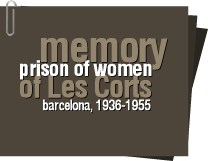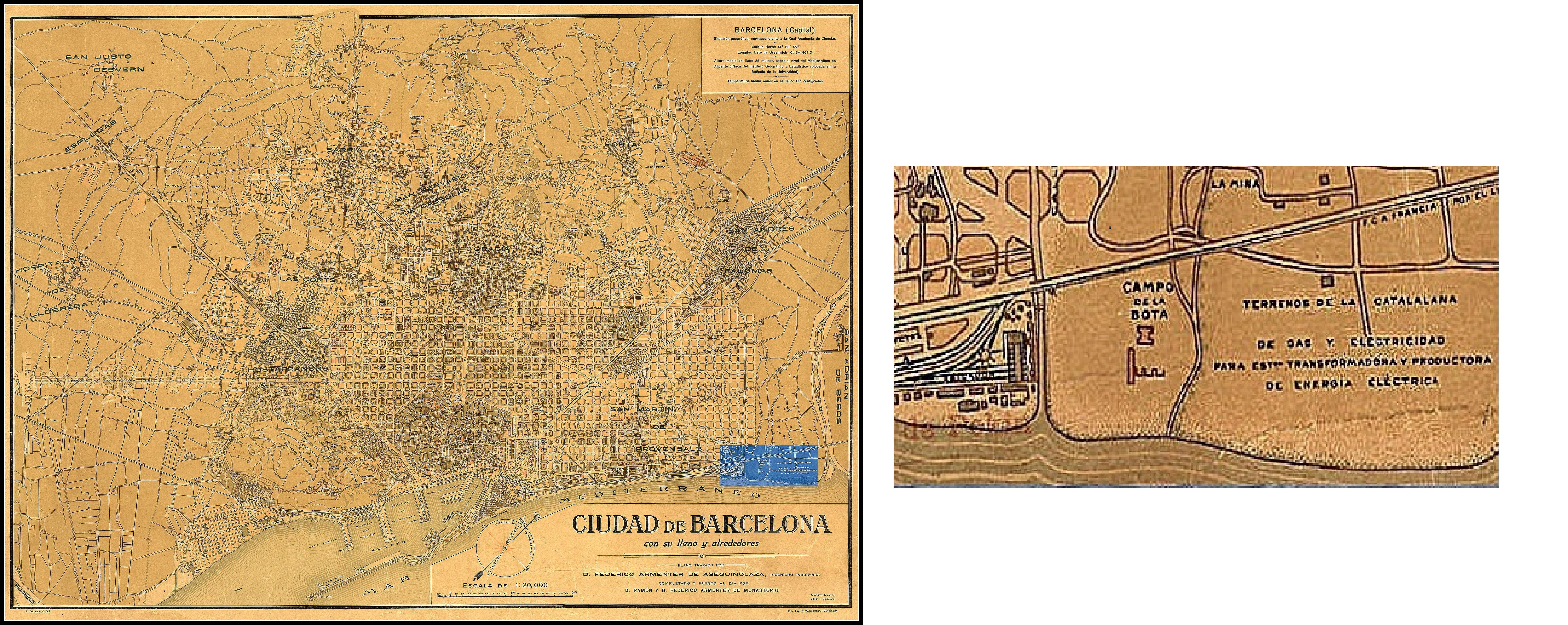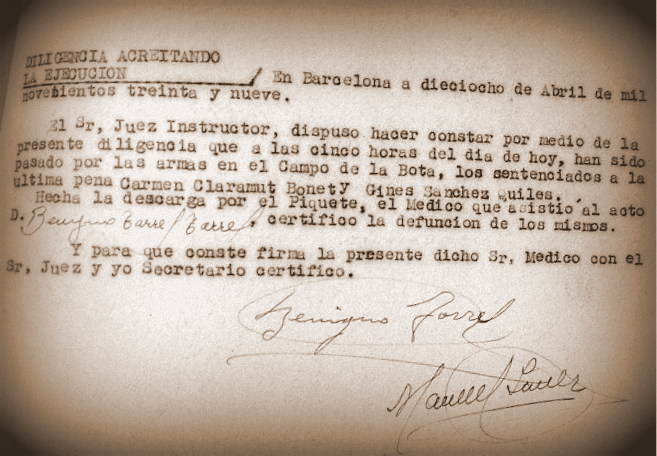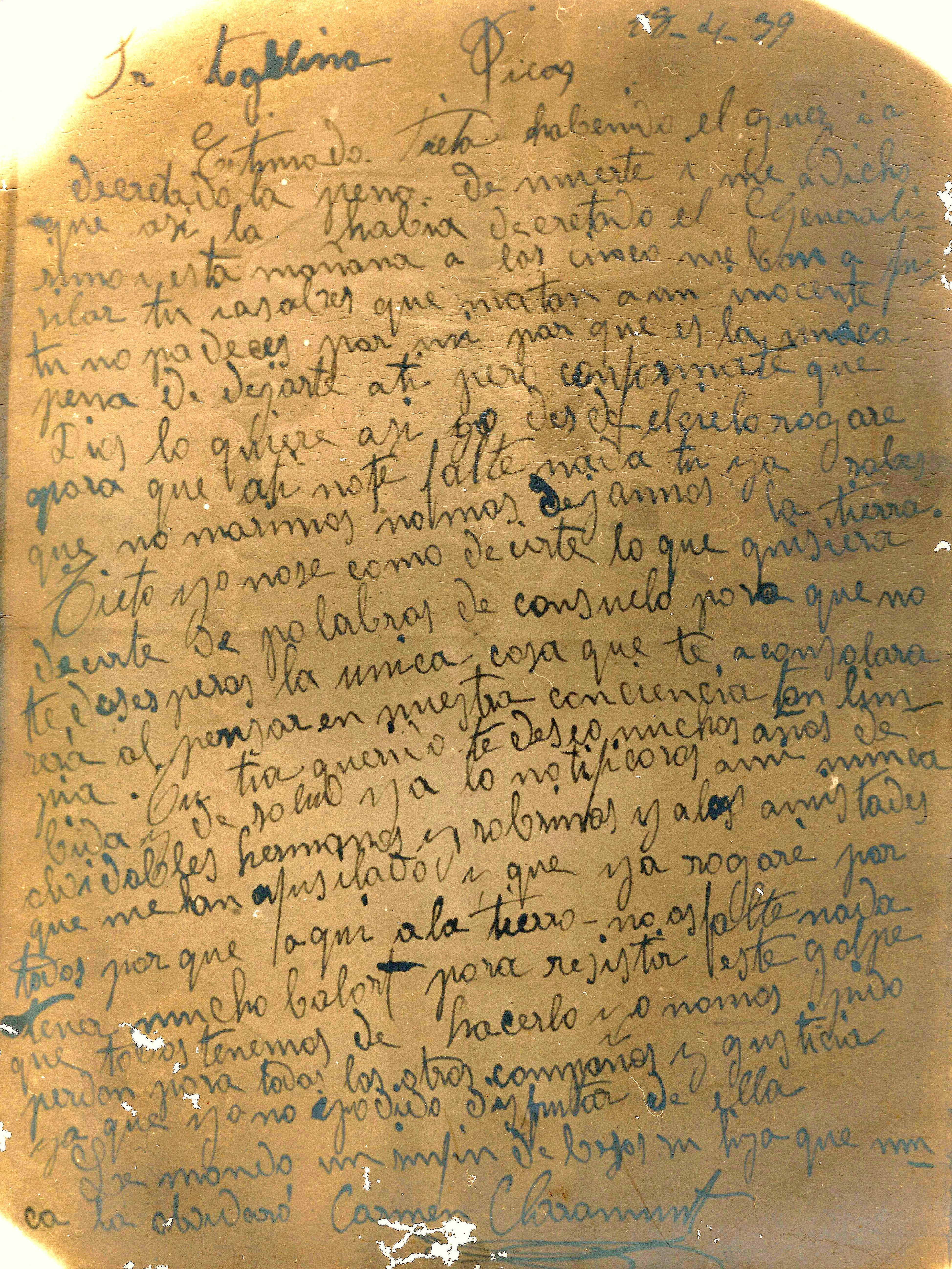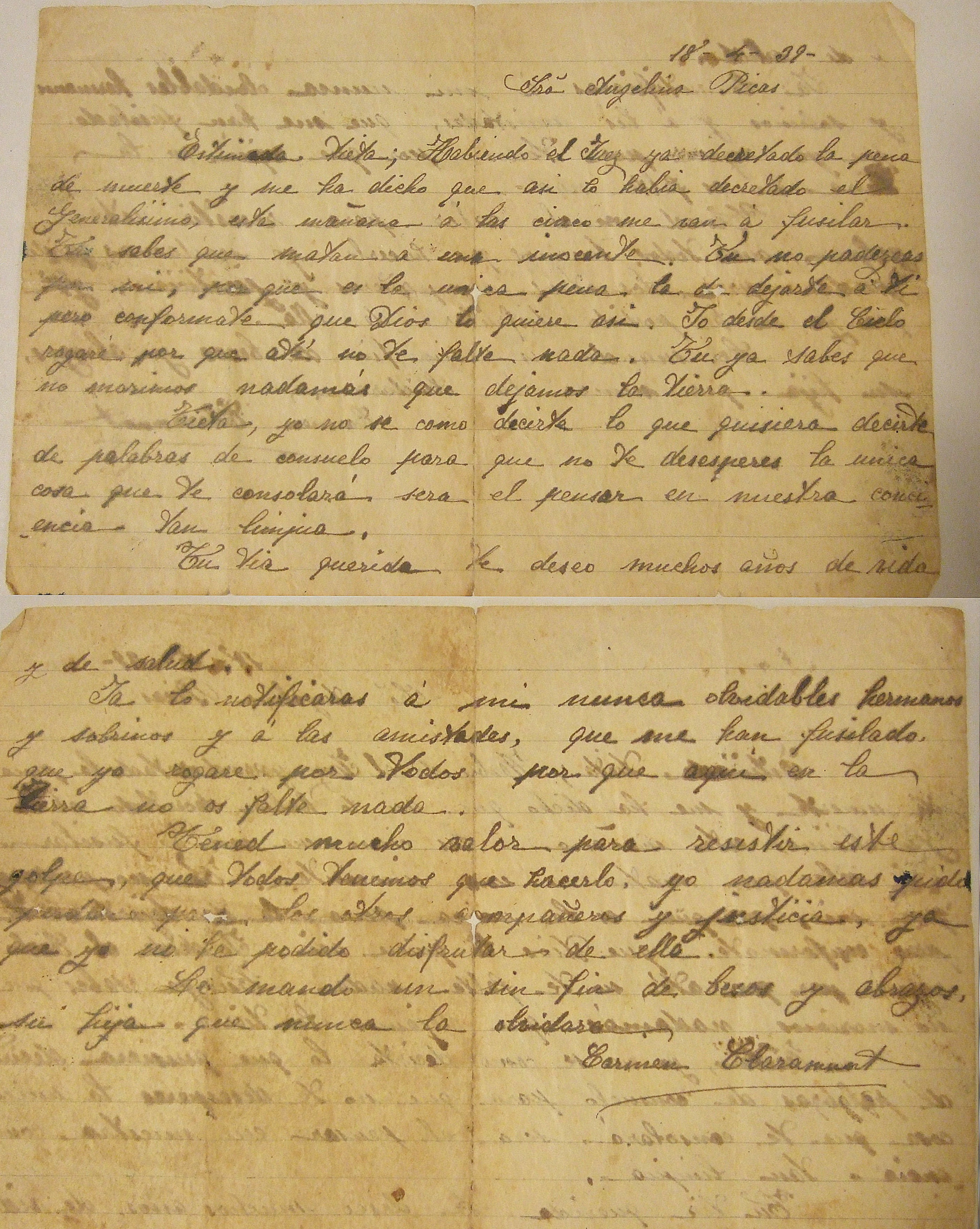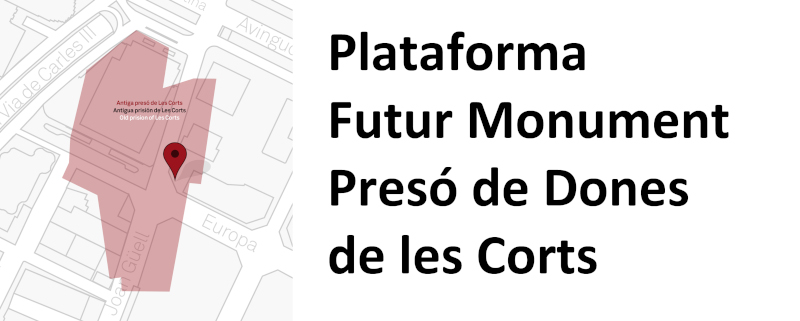Between 1939 and 1952, over 1,700 people were executed in this place (the vast majority were men).
The women spent the last night in the chapel of Les Corts prison itself, where they usually had a few hours to write their farewell letters - the so-called cartas de capilla (“chapel letters)- before the arrival of the truck that was to take them to the place of the execution
Carme Claramunt Barot was the first inmate to be executed: she was 41 and although settled in Badalona, she was originally from Roda de Berà (Tarragona).
It was a speedy process: arrest by members of the Falange on March 3 and handover to the Guardia Civil of Badalona; imprisonment on March 13; court martialled jointly on the 27th -alongside 8 other defendants indicted for various actions, with no connection between them- and sentenced to death for the alleged crime of "military rebellion”.
Lastly ratification of the sentence by General Franco's legal advisory board on April 17 and execution at 5 AM the following day.
Angelina Picas, Carme’s godmother, had been arrested at the same time as Carme. According to family reports, Carme went to Badalona regularly to deliver samples of nube ("cloud" in Spanish), traditional crochet work, to stock the shop Angelina was running. That was how Angelina, who had no children, decided to take Carme under her wing (“afillar” in the Catalan language).
Angelina, charged with the same crimes, saved her life by pure chance as she was tried by a different court martial and got a life sentence. This tribunal was prosecuting 18 other people involved in several processes from various locations and served ten death sentences.
Encarnación Llorens Pérez was given one such sentence. She was a 45-year-old labourer, the second Les Corts inmate to be executed, on April 16, 1939. Encarnación was shot alongside her husband Ramón Roca Prats, a peddler, and her son Ramón Roca Llorens.
Angelina Picas was the recipient of Carme's carta de capilla, her farewell letter, which she kept during and after her term in prison (1939-1943).
The letter ended in the hands of Teresa Rius, who had also been a prisoner in Les Corts and was a native of Roda, like Carme. Teresa's son, Joan Mercadé, also jealously guarded it.
In fact, this letter was an amended transcript of the first, which has also been preserved. It reveals the existence of a whole network of contacts of former prisoners and their relatives committed to the preservation and transmission of the memory of their fellow inmates (such as Carme).
Sources:
ARCHIVO DEL TRIBUNAL MILITAR TERRITORIAL TERCERO DE BARCELONA (ATMT3). Sumarísimo de urgencia 2863. Plaza de Badalona; Sumarísimo de urgencia 630. Plaza de Barcelona.
CORBALÁN GIL, J. (2008): Justícia, no venjança. Els executats pel franquisme a Barcelona (1939-1956). Valls; HERNÁNDEZ HOLGADO, F. (2011): La prisión militante. Las cárceles franquistas de mujeres de Barcelona y Madrid (1939-1945), Universidad Complutense de Madrid, PhD thesis; FERRANDO PUIG, E. (2016): Executada. Barcelona; ROMEU SANTOS, Conxita and VIVES BORONAT, Maria Fe (2009): “La nube: una aportació de les dones de Roda de Berà a l’economia familiar”, in BOI, Centre d’Estudis Rodencs, 22, pp. 2-8; CENTRE D’ESTUDIS RODENCS (2004): “Les veus del silenci. II República, Guerra Civil, Revolució i Postguerra a Roda de Berà”, in BOI, Centre d’Estudis Rodencs, 12, p. 16.

